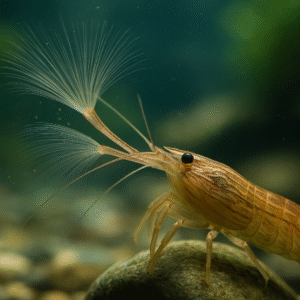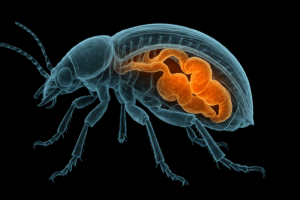Have you ever gazed at the night sky in a city and wondered why you can’t see as many stars as you could in the countryside? This phenomenon is caused by light pollution, and it’s more than just an inconvenience for stargazers. Light pollution has profound effects on wildlife, disrupting ecosystems and behaviors. In a country like India, where diverse species thrive, understanding the impact of light pollution is crucial for conservation efforts.
What is Light Pollution?
Light pollution refers to excessive or misdirected artificial light that brightens the night sky, making it difficult to see stars and affecting natural cycles. It is caused by streetlights, commercial buildings, billboards, and even homes. Light pollution is classified into three main types:
Skyglow: The brightening of the night sky over populated areas.
Glare: Excessive brightness that causes visual discomfort.
Light Trespass: Unwanted or intrusive light that spills over into areas where it is not needed.

The Relevance of Light Pollution in India
India is home to a wide variety of wildlife, from the majestic Bengal tiger to the delicate butterflies in our gardens. However, as urbanization expands, light pollution is becoming a significant threat to these species. Many animals rely on natural light cycles for activities like hunting, mating, and migration. Disruptions in these cycles can have serious consequences for their survival.
Effects of Light Pollution on Wildlife
Disruption of Natural Behaviors:
-
- Nocturnal Animals: Many animals are nocturnal, meaning they are active at night. Light pollution can confuse their internal clocks, leading to disorientation and affecting their ability to find food and mates. For example, the Indian flying fox (a type of bat) relies on darkness to forage, and excessive light can disrupt their feeding patterns.
- Migratory Birds: Birds that migrate at night use the moon and stars for navigation. Bright city lights can confuse them, leading to fatal collisions with buildings. Species like the Siberian crane, which migrates to India, are particularly vulnerable.
Impact on Reproduction:
-
- Sea Turtles: Female sea turtles, such as the Olive Ridley, lay their eggs on dark beaches. Hatchlings use the natural light horizon over the ocean to find their way to the sea. Artificial lights can lead them astray, reducing their chances of survival.
- Insects: Many insects, including important pollinators like moths, are attracted to artificial lights. This attraction can lead to exhaustion and death, affecting pollination and the broader ecosystem.
Alteration of Ecosystems:
-
- Plants: Plants also respond to light cues. Prolonged exposure to artificial light can alter their growth and blooming cycles, impacting the animals that depend on them.
- Predator-Prey Dynamics: Light pollution can give an advantage to predators that rely on sight to hunt, disturbing the balance of local ecosystems. For instance, frogs, which are prey for many nocturnal animals, become easier targets under bright lights.
Mitigating Light Pollution
Addressing light pollution requires a collective effort from individuals, communities, and policymakers. Here are some ways to mitigate its impact:
Use Shielded Lighting: Install lights that direct illumination downward rather than outward or upward. This reduces skyglow and glare.
Implement Lighting Regulations: Cities can adopt regulations to limit the intensity and hours of outdoor lighting. This is already being done in places like Ladakh, where efforts are made to preserve dark skies.
Promote Awareness: Educate the public about the importance of reducing light pollution for wildlife conservation. Schools, community groups, and media can play a significant role in this.
Adopt Smart Lighting Solutions: Use motion sensors and timers to ensure lights are on only when necessary. Smart street lighting systems can adjust brightness based on traffic and weather conditions.
Case Studies: Successful Light Pollution Mitigation in India
The Dark Sky Reserve in Ladakh: This region is working towards becoming India’s first dark sky reserve, aiming to minimize light pollution and protect its pristine night skies. This initiative not only benefits astronomy but also the local wildlife.
Mumbai’s Olive Ridley Turtle Conservation: Mumbai has taken steps to protect the nesting sites of Olive Ridley turtles by regulating beachfront lighting during the nesting season, ensuring hatchlings find their way to the sea.
Conclusion
The impact of light pollution on wildlife is a pressing issue that requires immediate attention. By understanding how artificial light affects animals and ecosystems, we can take steps to mitigate its effects. Simple changes in our lighting practices can make a significant difference in protecting the diverse wildlife that calls India home. Let’s work together to preserve the natural darkness that so many species depend on.
Author’s Note
Thank you for reading about the impact of light pollution on wildlife. If this topic resonates with you, please share it with others to spread awareness. Together, we can make a difference in protecting our environment and its inhabitants.
G.C., Ecosociosphere contributor.
References and Further Reading:
- International Dark-Sky Association
- World Wildlife Fund India
- A Sky Gone Dim: The Impact of Light Pollution on our Starry Skies – INVC. https://www.internationalnewsandviews.com/a-sky-gone-dim-the-impact-of-light-pollution-on-our-starry-skies368935-2/
- Illuminating the Night Skies: Challenges and Solutions in Mitigating Light Pollution with High Mast Lighting – Magazine Technologies. https://magazinetechnologies.com/illuminating-the-night-skies-challenges-and-solutions-in-mitigating-light-pollution-with-high-mast-lighting/
- Illuminating the Night Skies: Challenges and Solutions in Mitigating Light Pollution with High Mast Lighting – Magazine Technologies. https://magazinetechnologies.com/illuminating-the-night-skies-challenges-and-solutions-in-mitigating-light-pollution-with-high-mast-lighting/
- Light Pollution Exposed: Unveiling Its Alarming Effects On Our Environment And Health | Let’s Talk Geography. https://letstalkgeography.com/light-pollution/
- Light Pollution – The Dark Side of Urbanisation | Dark Sky Møn. https://darkskymoen.dk/en/posts/light-pollution-dark-side-urbanisation
- Christmas is over, what now? | Canadian Mennonite Magazine. https://canadianmennonite.org/articles/christmas-over-what-now




